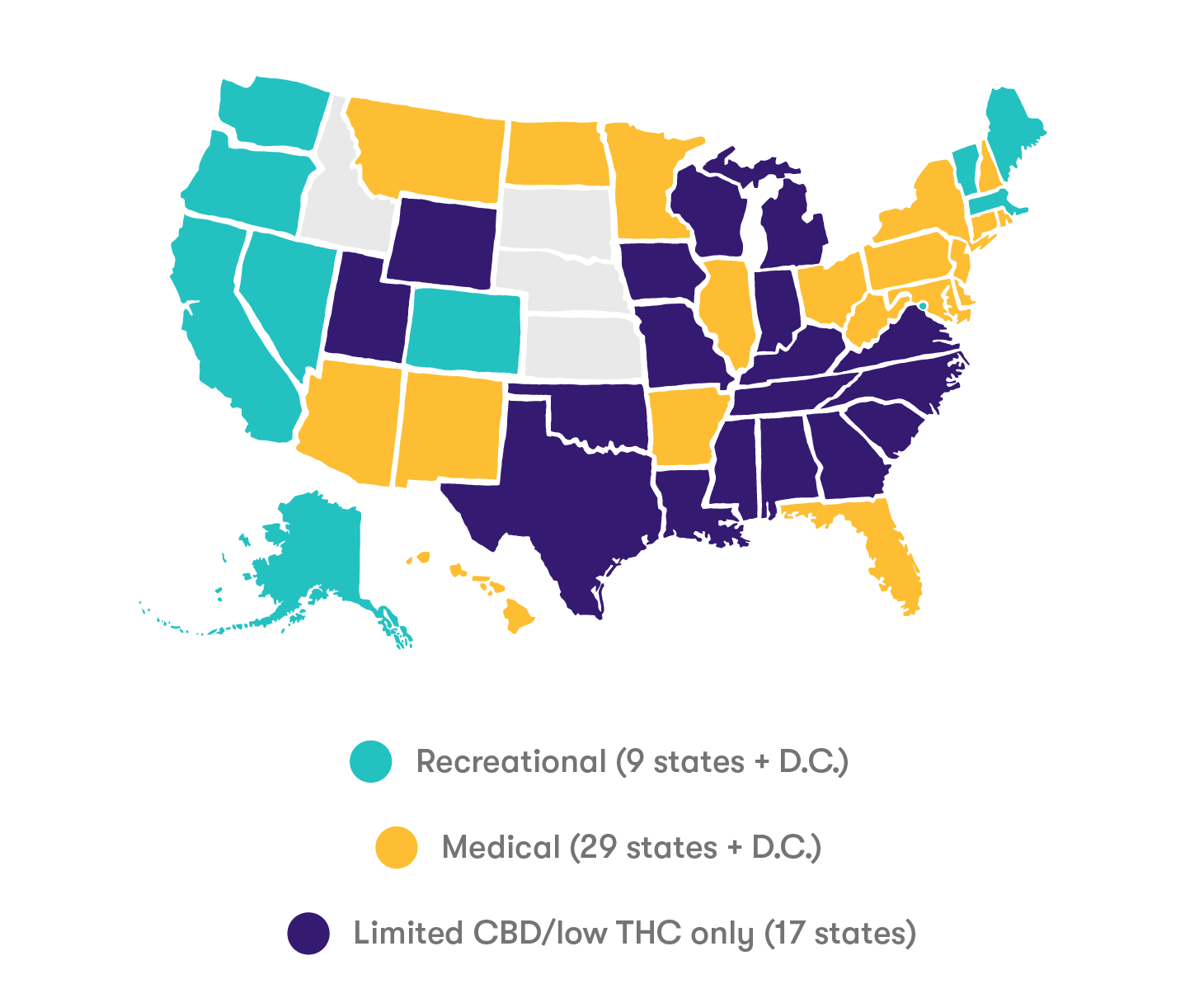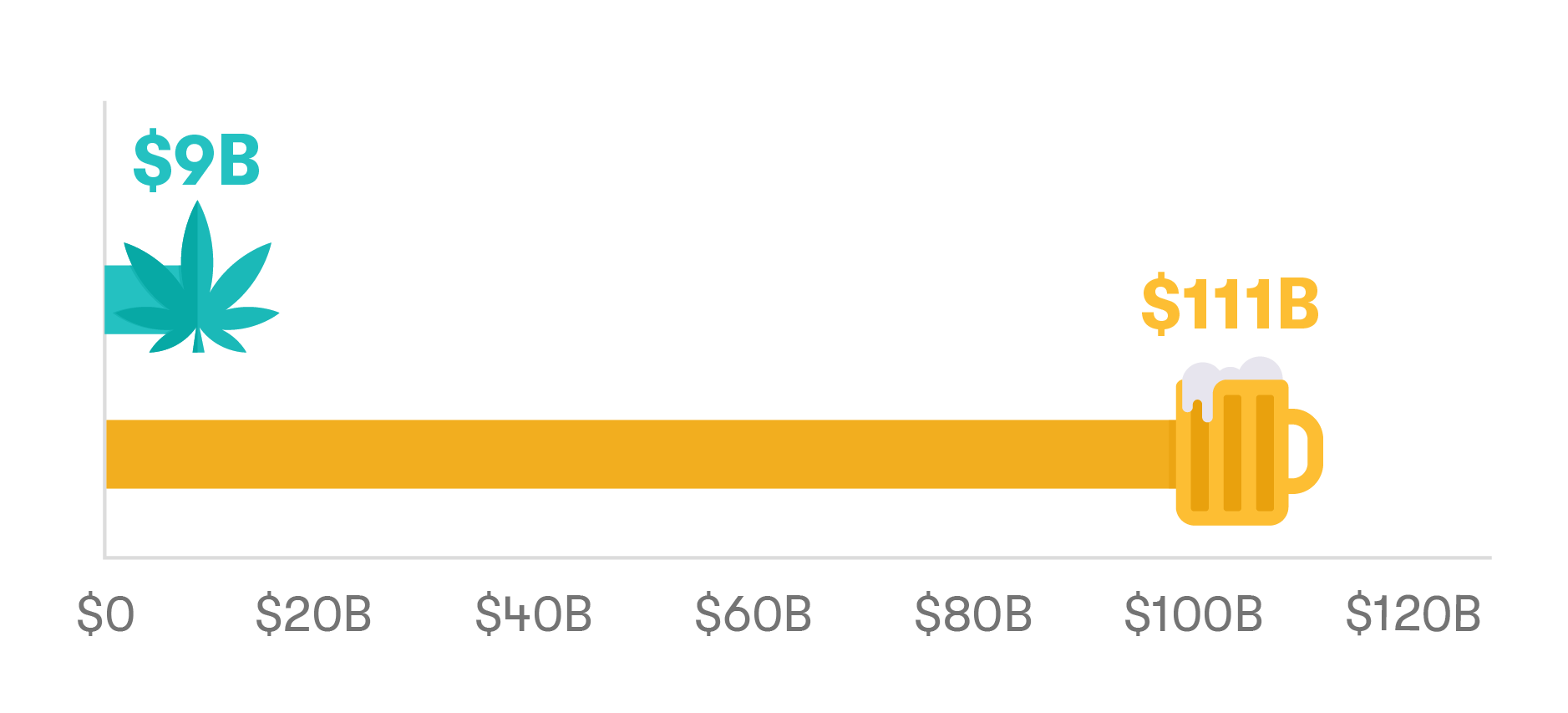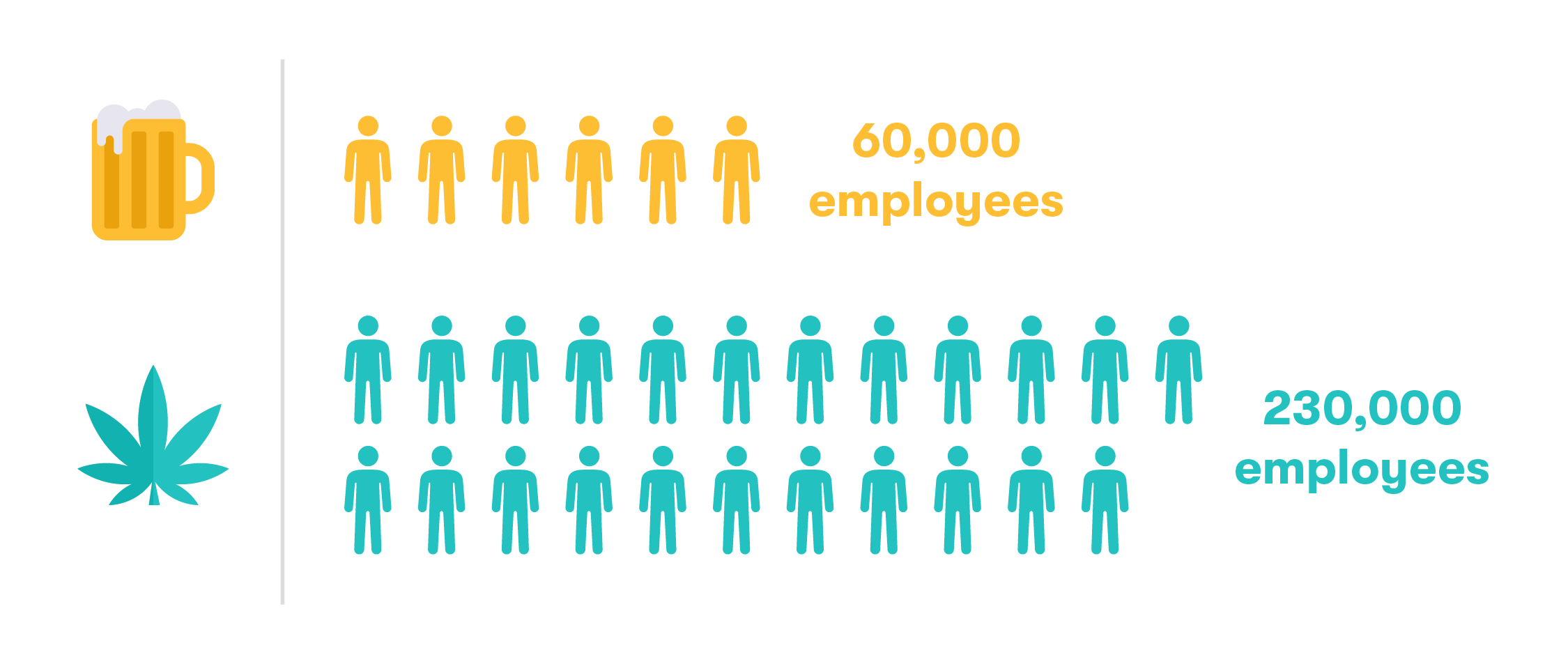Sep 19, 2018
Beer vs. Marijuana: The Battle Royale of Partying
The business of partying is bigger than you’d think.

Pick your poison, America.
The typical American Friday or Saturday night usually involves a drink or two—be it a glass of Chardonnay or a can of Rainier. Drinking is a popular way to relax, to unwind, and to otherwise grease the social wheels.
Though not everyone drinks regularly, seven in ten Americans say they’ve had an alcoholic beverage of some type within the past year, according to 2015 government data.

But recently, beer is butting up against a challenger whose growing legality in states is making it popular on the party scene: Marijuana.
Marijuana use isn’t new, of course. But legal consumption of the drug is. While marijuana is no longer prohibited for recreational use in nine states, it still inhabits a quasi-legal gray area. A Washington State Patrol officer—a law enforcement official enforcing state law—won’t (or shouldn’t) arrest you for possession of an ounce of Blue Dream, for example. But a Drug Enforcement Administration officer will, as he or she is tasked with enforcing federal law.

Cannabis, another name for marijuana, is illegal under federal law. So, despite its increasingly mainstream appeal, it’s still out of bounds, legally, for most U.S. consumers. Nevertheless, the legal cannabis industry is growing quickly and quietly.
It still has a ways to catch up to the alcohol industry, though—while roughly three-quarters of Americans say they’ve had a drink over the past year, only 22% admit to using cannabis in the last 12 months, according to a recent poll. It’s important to keep in mind that some people may not be willing to admit to breaking a federal law. So, we may not truly know how many Americans actively use cannabis.
While there are plenty of other mind-altering, inhibition-loosening substances out there, beer and marijuana are perhaps clear-cut favorites of U.S.consumers. But how do the two stack up? Here’s a snapshot comparison:
Beer vs Marijuana
Has been with humanity since:

Beer: since 5,000 B.C. (at least)
Marijuana: since 9,000 B.C.
Start of modern industry in the U.S.:

Beer: 1933 (end of Prohibition)
Marijuana: 2012 (first legalization ballot measures pass in Colorado and Washington)
Industry sales in 2017:

Beer: $111 billion (BLS, 2017)
Marijuana: $9 billion
People employed:

Beer: 60,000 (BLS, 2017)
Marijuana: 230,000
Stats:
Beer’s strengths
It’s fun, relatively cheap, and pairs well with pizza.
Beer is also an American institution. The act of having a beer is woven deeply into our social fabric—you might have a beer when you tailgate at a football game, when you’re celebrating the holidays with your relatives, and even if you’re sitting at home, binge-watching Game of Thrones (in which the characters, also, drink beer).
Breweries employ tens of thousands of people, and the craft brewing industry is blowing up relative to larger, corporate conglomerates.
Plus, people are remarkably un-stingy when it comes to booze—they’ll prioritize it, even when their budget is tight. For example, U.S. consumers drank as much as they always have throughout the Great Recession.
Beer’s weaknesses
Alcohol consumption has been tied to numerous health issues, and drinking has had an enormous social cost. Excessive alcohol use costs the U.S. hundreds of billions of dollars every year for additional health care and lost productivity, according to the Centers for Disease Control and Prevention (CDC).
Excessive drinking also kills an estimated 88,000 in the U.S. every year as a result of car accidents, liver disease, etc., according to the CDC.
Read more: Cheers! All About the Beer Industry
Marijuana’s strengths
Cannabis is a mind-altering substance, just like alcohol, and subject to potential abuse. But it may not be as destructive—economically, or in terms of health. For example, while excess drinking kills tens of thousands of Americans every year, probably fewer people have suffered fatalities from marijuana use, according to data from the Drug Enforcement Administration (DEA),
There’s also evidence that suggests legalizing marijuana is tied to lower instances of violent crime, and possibly safer roads, as pot smokers appear to be more aware of their impairment when high, before getting in cars.
Legal marijuana has also proven to be a financial windfall for some states. In 2017, Washington collected nearly $220 million in taxes and fees from the cannabis industry, and Colorado generated $247 million.
Fun Fact: In 2018, at least three more states could legalize pot, including Michigan and traditionally conservative states such as Oklahoma and Utah.
Marijuana’s weaknesses
The most glaring issue with cannabis, currently, is its quasi-legal status. Again, marijuana is still illegal under federal law, which means that end-users and businesses can put themselves in legal jeopardy by cultivating, distributing, or using it.
There are growing concerns about the effects of cannabis use in adolescents, as some research has shown a relationship between marijuana and impaired brain development in teens. Smoking cannabis, too, can be damaging to the respiratory system—though it’s important to note that it’s not always smoked.
Also, it’s important to note that the true health impacts of cannabis aren’t yet understood, though there is some promising research.
Read more?: The Marijuana Business: What You Need to Know
You can cash in on the party with Stash. You can invest in both the beer and marijuana industry through exchange-traded funds and single stocks, and all it takes is $5 to get started.
* Source: Kirin, 2017
Related Articles

15 Largest AI Companies in 2024

The 12 Largest Cannabis Companies in 2024

What Is a Traditional IRA?

Saving vs. Investing: 2 Ways to Reach Your Financial Goals

How To Invest in the S&P 500: A Beginner’s Guide for 2024

Stock Market Holidays 2024





